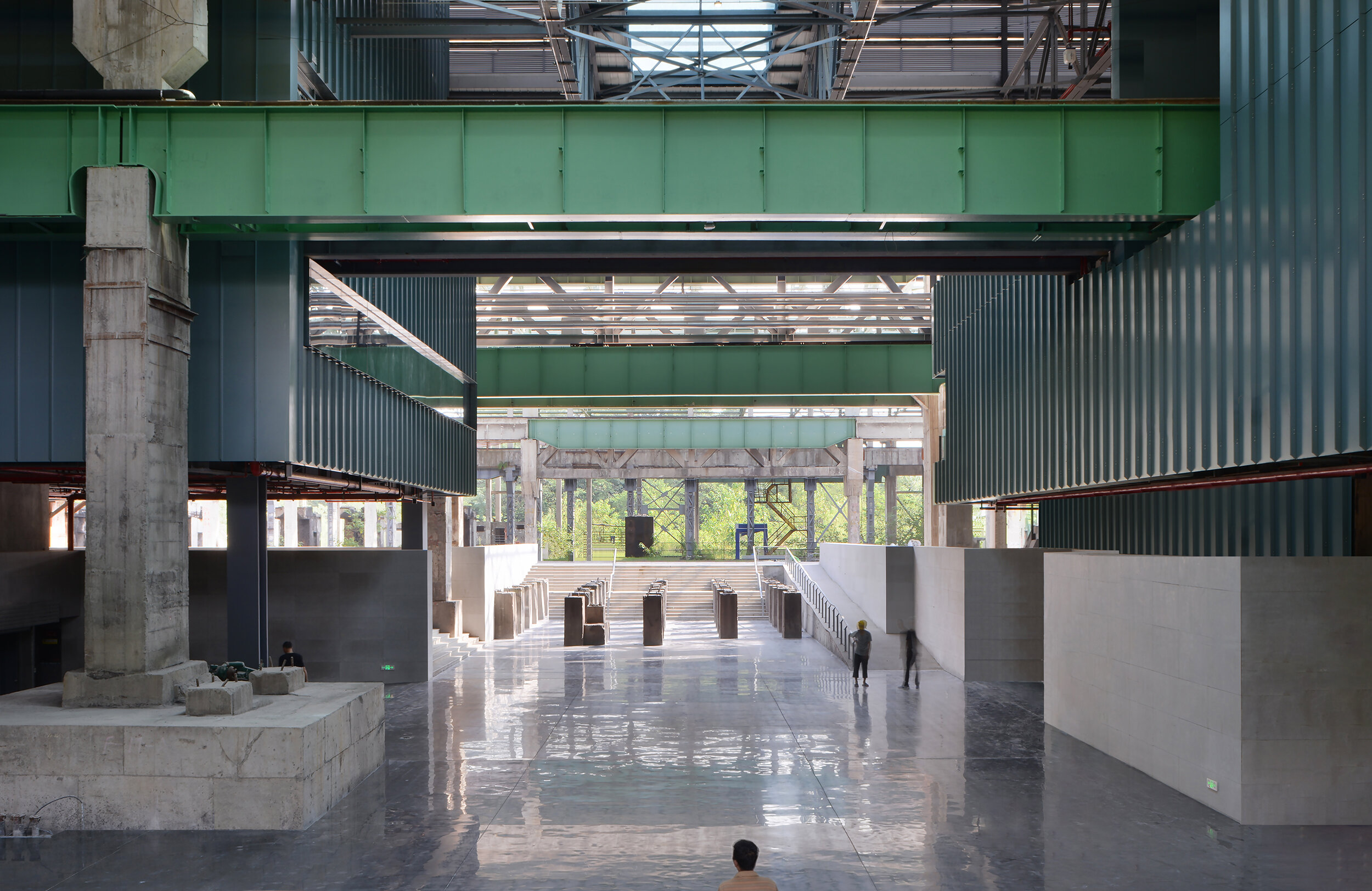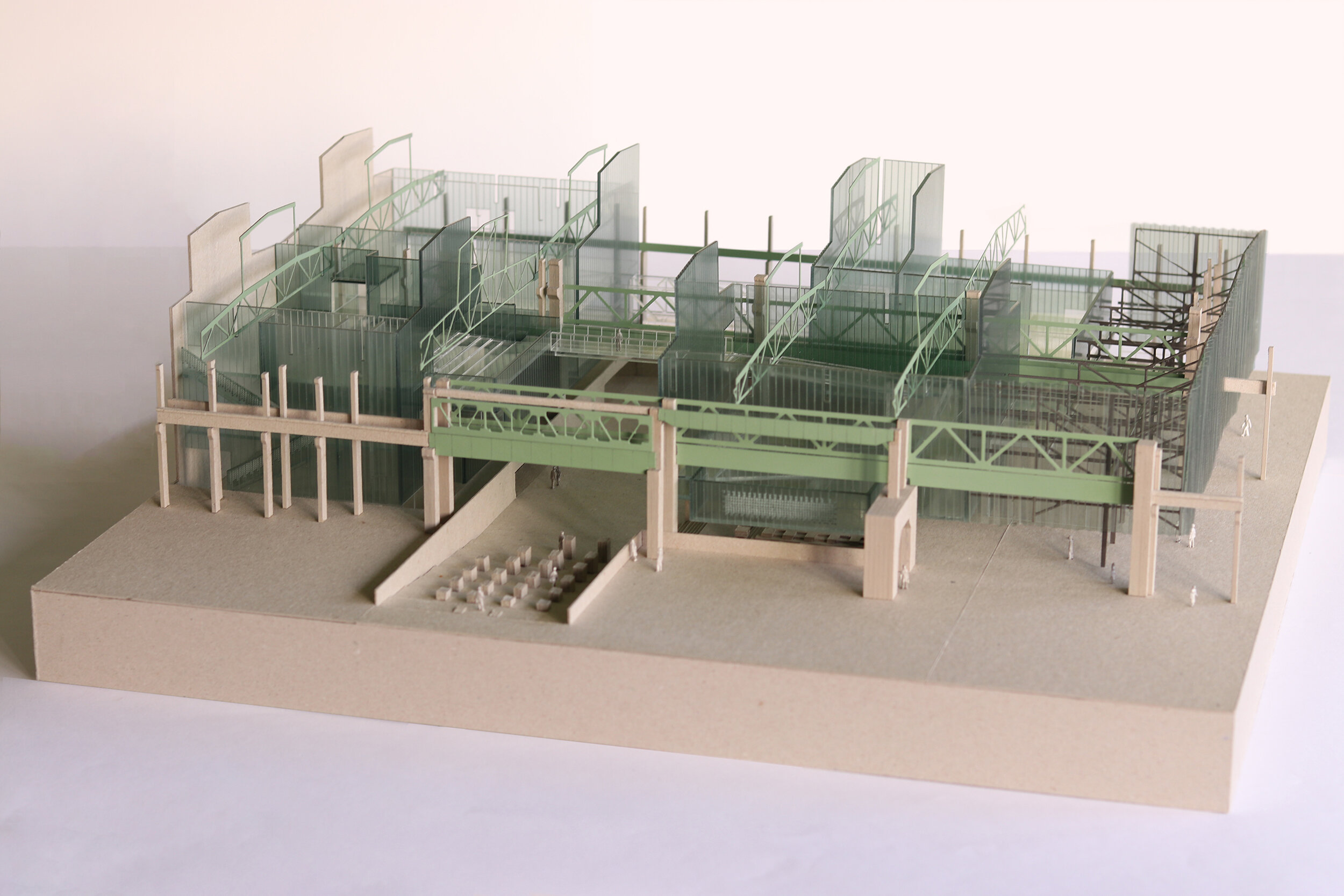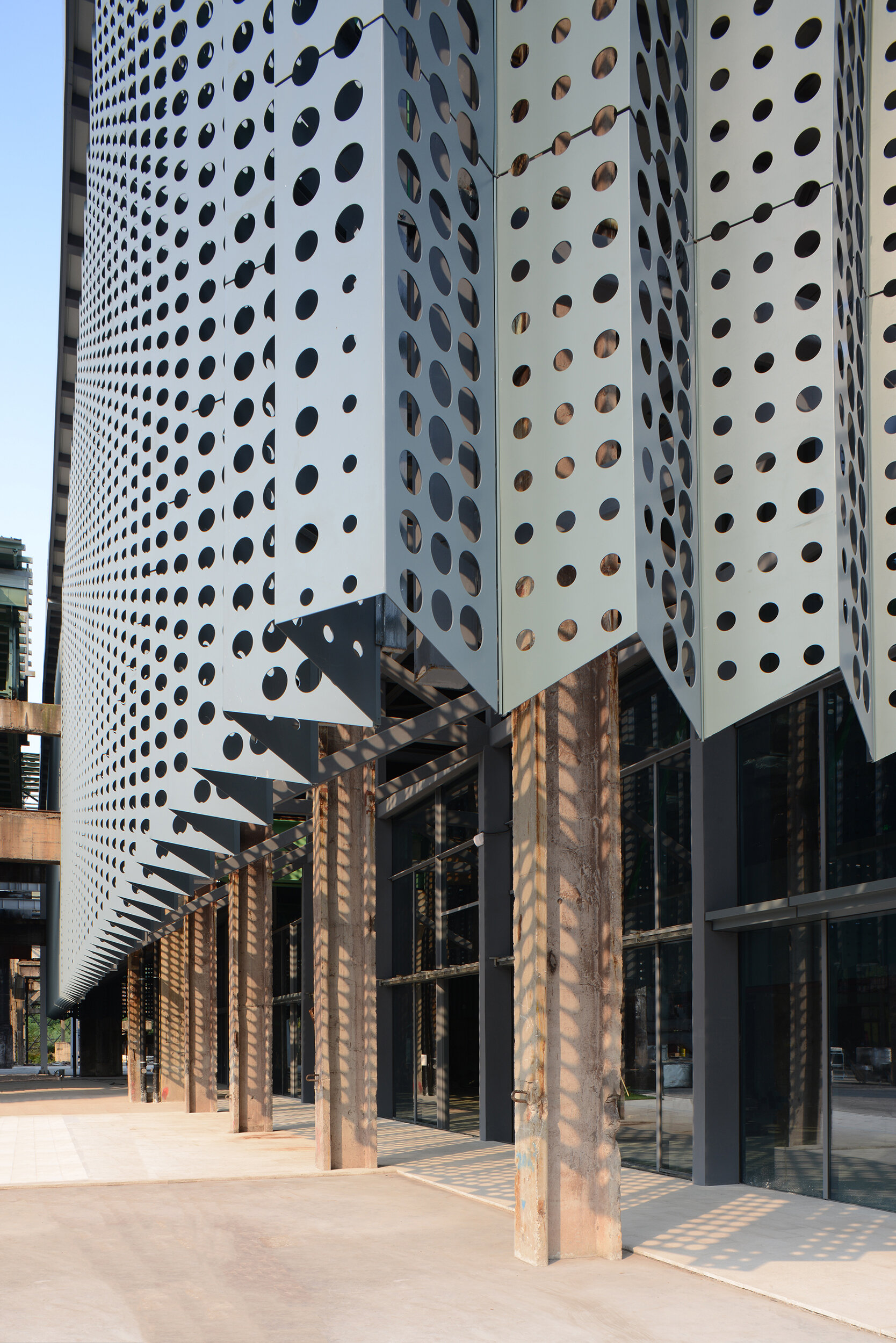Virtual Building Tour – Chongqing Industrial Museum by WallaceLiu
Fiona Mckay
The culmination of the 2020 AIA UK Chapter’s “Virtual Building Tour” series was held on 10 December 2020 with a tour of the Chongqing Industrial Museum. The project was designed by WallaceLiu, a London-based practice. The museum - celebrating the Chongqing Iron and Steel Plant originally constructed in 1938 - is located on the banks of the Yangtze River, on the periphery of the city. Ms Jee Liu, one of the founding architectural partners of WallaceLiu, gave a revealing and stimulating tour of the museum that was completed and opened in 2019.
Winners of the AIA UK 2020 Excellence in Design Awards for a Large Project by an Emerging Design Practice, WallaceLiu completed the Chongqing Industrial Museum by integrating it amongst some of the remaining structures of the former steel factory. The new 7,500 sqm museum is part of a larger redevelopment of the old factory site and was designed to recognise the national significance of steelwork in China’s cultural, social and industrial history.
As described by Jee Liu, the new museum building is constructed from a lightweight steel frame structure. This allows the building volumes to be inserted in between the old structure of the crane tracks, in celebration of its past, creating a new public function. As a result of an early site investigation, WallaceLiu conceptualized lifting the metal boxes containing the enclosed exhibition spaces off the ground, fashioning a permeable and open ground-floor experience. She described their solution as “Layers of Mystery,” inspired by the long, complex and layered views through the original factory site. The raised volumes are further linked by bridges at different levels and provide a continued reference to the open, lower ground-floor hall partially crafted from the preserved “large foundation pit.” The success of the design concept is exemplified by visitors being able to move from one box to another through connecting bridges allowing them to engage with the museum’s most important artefact, the conserved and restored elements of the mill’s structure. Jee Liu explained that it was paramount to express the key features of the existing steel factory as part of the exhibit in order for them to be discovered by visitors.
As explained by Jee Liu during the virtual tour, one of the defining elements of the proposal is the historic factory columns wrapped in a pleated metal screen that hangs down from new trusses which are raised off the ground level, to form layers of transitional space between the interior and exterior. The perforated, powder-coated aluminium panels become like a second skin that blankets the museum with a sharp serrated edge along the bottom. The lightness of the screen is contrasted with the robustness of the original concrete columns. The relationship between the new and the old is eloquently overlapped and changes with different light at different hours of the day through the play of shadows cast by the curtain. The design reflects an early site visit experienced by WallaceLiu as they observed a series of fences along the original structures. Described as early communist patterns that provided “layers of mystery,” the filtering light provides inspiration for the layering in the 3-D lattice curtain that appears to float, contrasting with the heavy columns behind. The materials and colours chosen and the aesthetics of the large perforated metal curtains, came from observations on site as well as the desire to deliver precision, simplicity and an intentional layering with the existing, post-industrial framework.
The AIA UK Chapter has announced that it will be hosting a new virtual building tour series for the 2021 season based on Winners of AIA UK 2020 Excellence in Design Awards. These guided virtual tours offer architects the opportunity to visit notable buildings that have particular design interests in the UK. You can follow this link to the upcoming virtual building tour series hosted by the AIA UK.
Written by: Gregory Fonseca, AIA
















